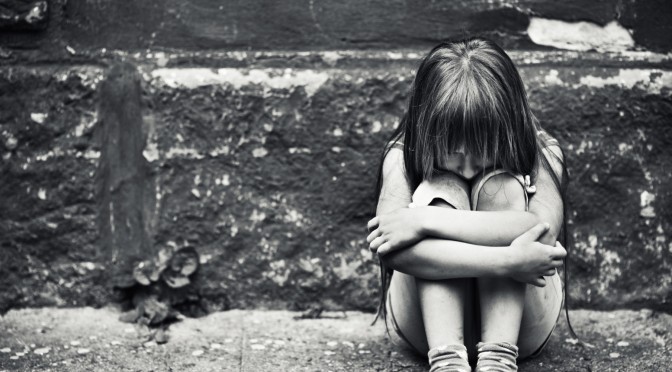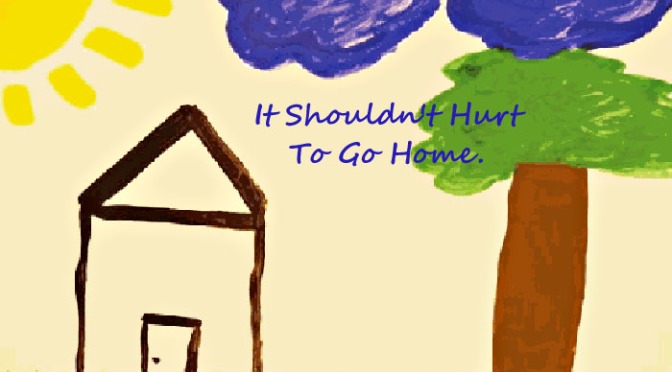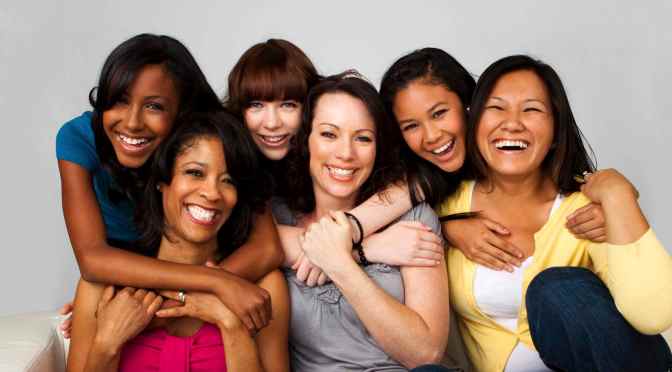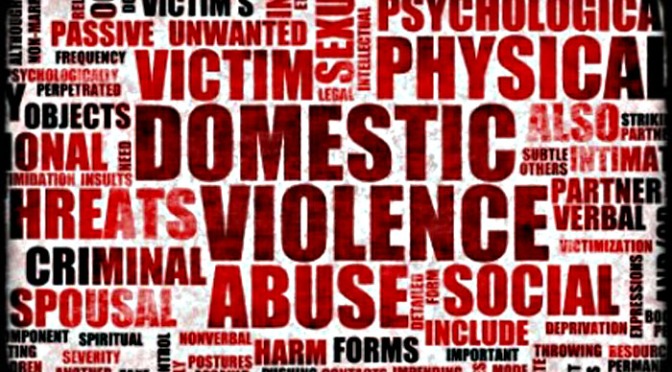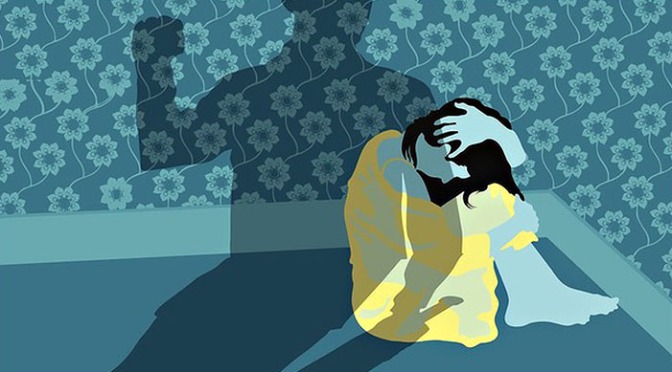In many parts of the world, the subject of violence against women is taboo. The violence is often also surrounded by prejudices and myths. Below are some of the most common arguments you might come up against once you have decided to work towards making the world a better place by showing people that violence against women exists. None of the arguments below is an acceptable reason for not getting involved in the work to stop violence against women in the world.
1) “Many more men than women are killed.”
How can this be an argument for not trying to end the violence which kills women? It is like saying we should not try to cure one disease because there is another which kills more people. Yes, it is true that more men than women are murdered. But the violence which kills women is special, for a number of reasons. Women are often killed in their own home by someone they love or have loved; someone they have trusted and liked. One common motive is that they want to leave their husband, who will then lose the control he has had, or who is afraid of losing the control. Many women are murdered when they decide to leave a relationship. The problem with violence against women in the home is that it has often been considered to be a private matter, but it is extremely damaging for the children who grow up with the violence. That is why we have to discuss violence against women as a separate problem if we want to put an end to it.
2) “The way in which different cultures view marriage and gender roles does not concern outsiders.”
According to international humanitarian law, the state has a responsibility to prevent, obstruct and punish all violations of human rights. Violence against women is not considered to be a private matter. The UN’s Universal Declaration of Human Rights, Article 3: Everyone has the right to life, liberty and security of person. Article 5: No one shall be subjected to torture or to cruel, inhuman or degrading treatment or punishment. The Convention on the Abolition of All Forms of Discrimination Against Women was adopted in 1979. In 1993 the General Assembly of the UN adopted the Declaration on the Abolition of Discrimination Against Women. The Declaration states, among other things, that violence against women shall be made a criminal offence, that women who have been subjected to violence shall be entitled to support and care, and that resources shall be made available for research into violence in the home. Violence in the home has far-reaching consequences and the economic costs to society are enormous. It is therefore a matter which concerns us all.
3) “No doubt she had provoked him.”
Provocation is rarely, if ever, used as an excuse for other types of crime and it is not accepted by the courts as an excuse for criminal behaviour. A man who has been the victim of aggressive behaviour by another man in a pub does not have the right to strike out. In many cases of violence against women the assault has not even been preceded by an argument.
4) “If you go around dressed like that you’ve only yourself to blame if you’re raped.”
So if you go around wearing an expensive watch you’ve only got yourself to blame if you’re robbed? Men are not some kind of pre-historic creatures controlled by their impulses and unable to control their behaviour. They are human beings, and human beings choose their actions.
5) “It is only mentally ill/alcoholics/drug addicts etc. who beat women.”
Violence against women occurs in all groups in society, in all countries and in all religions and life philosophies. No religion or culture advocates violence against women.
6) “Men are violent by nature; they can’t help it, it’s just the way they are.”
Both men and women can be violent and non-violent. But there is a greater acceptance, and sometime even an idealisation, of men’s use of violence. Male activities often involve the use of violence and exercise of power. This is a perception which can be changed.
7) “Certain women are drawn to violent men and they have to accept responsibility for that.”
There is no research to show that women who have been subjected to violence belong to a specific group or have a particular type of personality. The abuse can affect anyone. There are, however, circumstances which make certain groups of women more vulnerable and more likely to be exposed to violence. Two of the risk factors are a woman’s ability to support herself and whether the society around her is violent.
8) “We don’t have a problem with violence and rape in our country. We have good legislation. ”
Violence against women is a global problem. It was not until modern times that some countries made it illegal for a man to beat and rape his wife. In 1965 Sweden became the first country in the world to introduce legislation on rape within marriage. Since then many other countries have followed.
This does not mean that the violence against women has stopped, not even in Sweden, the country that led the way. The laws are still difficult to apply, since the violence usually takes place in the home without any witnesses. If there are no documented injuries, then it is word against word, in which case the crime investigations are usually closed. Only 25% of all reported crimes of assault against women by a man close to her actually lead to prosecution. (However, most of the prosecutions lead to a conviction.) When it comes to rape, around 10% of the reported rapes lead to prosecution; and there is reason to believe that only 10% of all rapes are actually reported.
9) “Women beat their husbands as often as men beat women.”
No, this is not true. Even taking into account that the number of unrecorded cases of women’s violence against men is in all probability high, all the research shows that the number of women assaulted by men is many times greater than the other way round. When men are assaulted, it is almost always by other men.
10) “What people do in their own homes is their business, no-one else’s.”
Is it? If so, where does the line go? If someone becomes unconscious? Or suffers life-threatening injuries? When there are children in the home? All children who are subjected to, or experience, violence in the home suffer. We do not know yet how serious the damage will be in the long term since children rarely talk about the violence unless an adult asks them. But we do know that children who do not have the opportunity to talk about it suffer more than those who have someone to talk to. Assault is a criminal act, not a private matter. If you hear a crime being committed you have a responsibility to show you care and contact the police.
11) “If it was that bad she would have left a long time ago.”
All the research shows that the worse it gets, the smaller her chances of leaving the man. At first she believes it will be alright, it will pass, get better. That sense of hope increasingly becomes a feeling of resignation, self-contempt and apathy. As long as she had the energy she was hopeful and naïve. When the hope has died it is often too late. Then the man becomes repentant and considerate between the outbursts. And in many countries it is not even possible for a woman to leave an abusive husband. Without money of her own and without the support of those around her the woman is forced to remain in an abusive relationship, whatever she wishes she could do.
12) “Men beat their wives because they’re jealous.”
Jealousy is a strong risk factor when it comes to being subjected to violence and it can be an important warning signal that something is not right. However, in most countries or according to international humanitarian law, jealousy is not an accepted excuse for violence. Jealousy often leads to attempts to control a partner and in most cases that control goes beyond the normal limits. The woman is not allowed to travel in a car with another man, or to leave the house, or even to go to the shops to buy food.
13) “Women make false police reports because they want revenge.”
That no doubt happens from time to time, but the opposite – that the woman does not report or talk about it at all – is much more common. Why would anyone wish to put themselves through an exhausting legal process in order to gain revenge? The majority of reported cases of violence in the home are not, in fact, prosecuted so the risk of a false accusation leading to a conviction is minimal.
14) “Men who beat their wives were themselves beaten as children or saw their mothers being beaten.”
This is sometimes true, but childhood experiences are not the most common denominator for men who assault women. One common feature, however, is their view of women, the perception that men are superior to women and that women are expected to obey. And women who were beaten as children rarely beat their husbands.
15) “Violence does not occur in LGBT relationships.”
Violence occurs in all types of partner relationships, irrespective of the parties’ sexuality and gender identity. A woman can be raped by her girlfriend, a man beaten by his husband and a transgender woman threatened by her boyfriend. When violence occurs in an LGBT relationship, circumstances such as homophobia and transphobia can mean that the couple are already more isolated and more dependent on each other. It may be the case that one or both persons in the relationship has little or no contact with their family and that many of their friends are friends of both parties.
With thanks to: Cause of Death:Woman.


